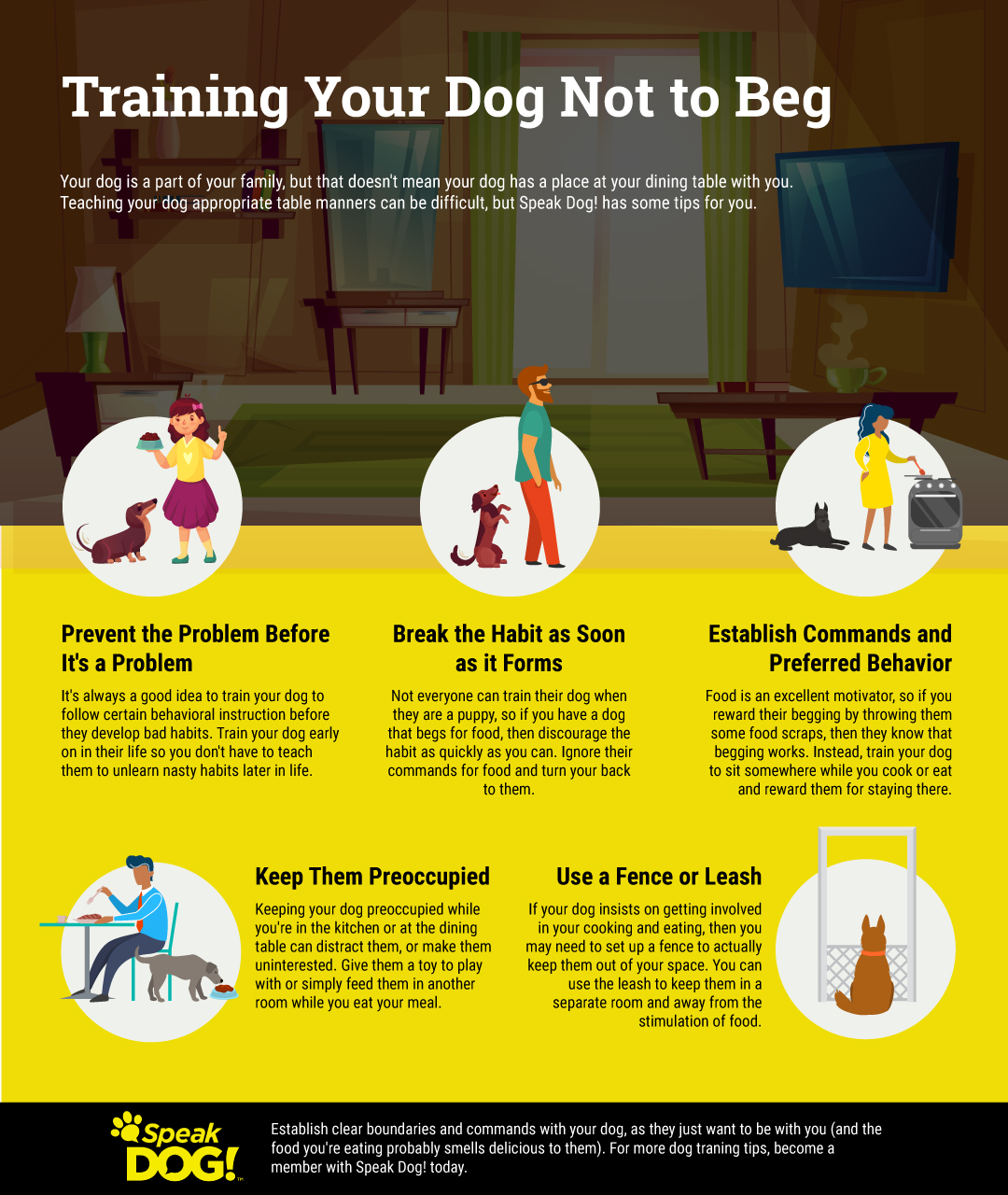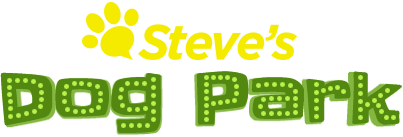Ask Steve: Begging
How to Train Your Dog Not to Beg
When you make great smelling food — or food in general — your dog wants to be a part of the moment. Your dog will stay in the same room as the food you’re eating and try to get as close to you as possible, looking at you with their big puppy-dog eyes and even going as far as resting their head in your lap. While this is all very cute to watch, it shouldn’t be encouraged, because the second you give in, your dog knows they have you wrapped around their paw. It can be hard to be your dog’s leader and change their behavior, but it will immensely change the relationship you have with your dog for the better. The key here is not to keep your dog away but to establish yourself neurologically so that they are given permission to be around you and food. As always, it is good to establish foundational rules when the dog is young, but unless you establish yourself as your dogs leader through tone, timing and consistency, the effects of obedience training that happened in the past begins to slip through the cracks and you never even notice until your dog is jumping up at you, barking at every single noise or disturbance, and begging for food. For more coaching and guidance on how to become your dog’s leader, follow our blogs, watch our videos, and subscribe to Speak Dog!™ to hear Steve Lankfer give you his tried and tested dog-training techniques.

Prevent the Problem Before It’s a Problem
As anyone who has had pets knows, it’s always a good idea to train your dog to follow certain behavioral instructions before their behavior becomes an issue. Your dog’s behavior is built, and good behavior is just as easily learned as bad behavior. Training your dog when they’re a puppy can be difficult, but it can be even harder to train them to unlearn bad habits when they begin to get older. Contrary to popular belief, you can teach an old dog new tricks. But you may find it to be extremely frustrating to do so if you haven’t established yourself as its leader first. That is where the power of Speak Dog!™ comes in. No matter what age you connect with your dog on their level, you’ll discover 100% obedience 100% of the time with Speak Dog!™. Repairing and preventing dog problems is simply a matter of effective leadership.
Breaking Your Dog’s Begging Habit Once it is Formed
Breaking a habit once it has been formed is harder than training your dog not to beg in the first place. Begging is a great opportunity to practice the tenants of Speak Dog!™. Steve Lankfer will coach and guide you on how use tone, timing and consistency to correct your dog for begging and praise your dog for respecting you as its leader in the presence of food. You may have heard that it is best to just ignore your dog when they are begging. This sounds like it would be easy because all you have to do is avoid their whines, eye contact, and paw hits. But as they feel ignored, your dog may actually get more intense with their begging techniques. They may whine louder and paw at you harder. Whatever you do, do not give into their begging! Have faith that addressing your dog’s begging around food will establish yourself and their stable leader. Soon they will be looking to you in a socially healthy way for permission to join you – something they are wired to need from you.
Establish Commands and Preferred Behavior
Keep in mind that food is an excellent opportunity to reinforce your dog’s behavior. If you’re eating dinner at the table and your dog licks their lips, whines, or paws your legs and is rewarded by food that you carelessly give to them, they learn that begging is an effective way of getting what they want. If you don’t want your dog to beg at the table, then don’t feed your dog at the table. If you don’t want your dog begging for food in the kitchen while you cook, then don’t give them food while he’s in the kitchen. Decide where you want your dog to be while you eat, and train them to be there. This space becomes their routine and where they go when you eat. If you do want to share food with your dog, then establish a place to feed them and only feed them there. Your dog needs a sense of order and direction, so encouraging them to stay in a designated place while you eat your food can lead them to change their behavior.
Keep Them Preoccupied
Keeping your dog busy while you eat is a great way to divert their attention away from you while you cook and enjoy your meals. Give your dog a toy that you can put treats or peanut butter in and let them play in another room. As long as their attention is shifted, then they have no reason to pay attention to what you’re doing. Remember though, this is only a temporary solution. Once you’ve established yourself as your dog’s leader you’ll only be using toys and treats for play and Pavlov-oriented teaching (stimulus/response reward technique).
Keep Them Removed
If your dog is just too keen on getting involved with what you’re doing, you may read the general information online about putting up a gate to keep him out of the kitchen and dining room. Yes your dog will still be able to see you and you’ll be able to interact with them, but they won’t understand why they are not in your space begging for any scraps. This also goes for using a leash to tether them to keep away. The goal is to lead your dog towards healthy, social behavior they are naturally wired to understand. This eases the tension and establishes understanding/stability in your dog. This also establishes for the dog an understanding of you as their leader.
Avoid Yelling
Shouting at your dog only confuses them and makes you more angry. If you want to establish and maintain leadership with your dog, then seek eye contact from them and speak in a firm, stable tone that is consistent every time you correct your dog. You can get the response you are looking for 100% of the time when your timing and tone are consistent as opposed to random yelling. The only language your dog understands are the tones that you communicate clearly to them in a timely manner. Shouting isn’t effective because it can be confusing to them. This creates a leadership vacuum and causes your dog to become more and more socially broken. Being present, calm, and even-tempered will produce long-term results. Most importantly because dogs are drawn to stability.
If you want to effectively lead your dog, then check out Speak Dog!™ today! Subscribe for more information on how to be your dog’s neurologically asserted leader.

Join our canine community today!
Steve's Dog Place is the FREE place to talk about dogs, learn about their behavior, brag on your pet and more.
Make a pet profile
Share pics
Meet other dog lovers
Post canine questions
Earn Attaboy! Reward Points and more
